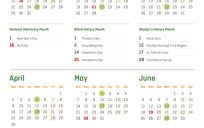Yesterday, the White House released a memo outlining the prospects of the upcoming Health Insurance Marketplace to increase choice and control for consumers. The Marketplace (aka Exchanges) will be operated differently in each state, but will nonetheless serve as the single application through which folks will be able to see if they qualify for financial assistance, compare insurance options and evaluate insurance providers.
The Marketplace is a standout component of the Affordable Care Act because it turns to a well-known tool in improving services: introducing choice and competition. These two C’s are a longstanding reform approach to enhance performance in the provision of public services. Currently, competition and choice in the health insurance market is lacking. The memo highlighted that in 46 states (including DC), two health insurers dominated over half of the individual enrollee market. In 11 states, the largest two health insurance companies covered 85% or more of the individual market.
The model of choice and competition is simple. Since money follows the choice of users, only the most attractive insurers will remain in the market. These will be the insurers that that improve services and provide the best quality for the cost. While the model is simple, there are a few critical conditions to effectively applying choice and competition:
- Competition must be real in order to provide users with comparable alternatives
- Choice must be informed, especially regarding the quality of the alternatives
- Cream-skimming must be prevented, meaning insurers do not have the authority to take only the “best” consumers (aka the healthiest, lowest-cost enrollees)
The Marketplace will take care of the second point by informing citizens of their insurance options. Meanwhile, the Affordable Care Act addresses the third condition as insurers will not be able to discriminate based on pre-existing conditions and anyone can switch plans through the Marketplace.
However, main challenge to the initiative is creating real competition among insurance providers. According to the memo’s preliminary findings, about 90% of target enrollees will have at least 5 choices in health insurers after the Marketplace is in place. This is promising, but time will tell if competition will sustain and continue to attract new and higher-quality insurance providers in the long haul.
We’ll all see how the Marketplace pans out after it’s rolled out in next year, but currently, its impact seems promising. Surely, most shoppers, in healthcare and other realms, wouldn’t deny the opportunity for more options!
What do you think about the upcoming Health Insurance Marketplace? Read the memo for yourself here.
Are there other areas that could benefit from more choice and competition?




I need affordable healthcare when I retire. I am unable to retire now because I would have no health benefits.
Thanks for the comment, Karen. Your concern is certainly widespread. In fact, my dad (64 this year) primarily continues working in order to maintain health insurance for himself and my mom. Hopefully, the Health Insurance Marketplace and other legislative pieces lead to more affordable and improved healthcare.